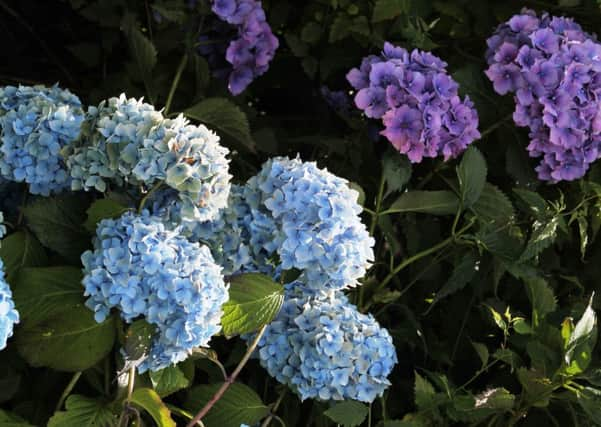‘Strait-laced’ Hydrangeas making a comeback


They were the familiar face in Victorian times, often grown by the front gate where they acted like welcoming sentinels, and they continued to be fashionable favourites until well after the Second World War.
But it couldn’t last, and hydrangeas fell out of favour. They were considered old fashioned, strait-laced, unworthy of a place in the modern garden.Thankfully, things seem to have turned full circle and hydrangeas are now selling in their hundreds of thousands, but this time more as container plants than permanent border fixtures.
Advertisement
Hide AdAdvertisement
Hide AdMost people can recognise a hydrangea; well, the Mopheads (Hortensias) at least. They are the most commonly seen, with their great, round flowerheads which usually start to appear in July and which continue well into September. They are very British – you can grow them in white, red or blue, but the colour depends on the acidity or alkalinity of the soil; acid gives red, alkaline gives blue.
Fewer people will recognise the Lacecaps with their flat central flowers surrounded by a ring of larger blooms. And as for the daddy of them all, H paniculata ‘Grandiflora’, well, it’s more like a shrub topped with flowery ice-cream cones – a stunning shrub for the late summer garden.
Hydrangeas like a fertile soil which is well-drained but moisture-retentive and although they aren’t adverse to full sun, they do appreciate a bit of shade. Work in plenty of organic matter into the soil prior to planting, and after planting and in subsequent years, apply plenty of organic matter as a mulch. This could be well-rotted leafmould, garden compost, composted bark, or farmyard manure, if you can get it. The big blooms of the Mopheads are ideal for flower-arranging, but it’s best to leave their dried carcases on the shrub until spring – cut them off in the autumn and they won’t be around to protect the shrub from potentially damaging frosts.
And that’s why hydrangeas fell out of favour – if you hack off the flower-heads as soon as the blooms have died, the plants are nothing more than skeletons of dried twigs – not very appealing.